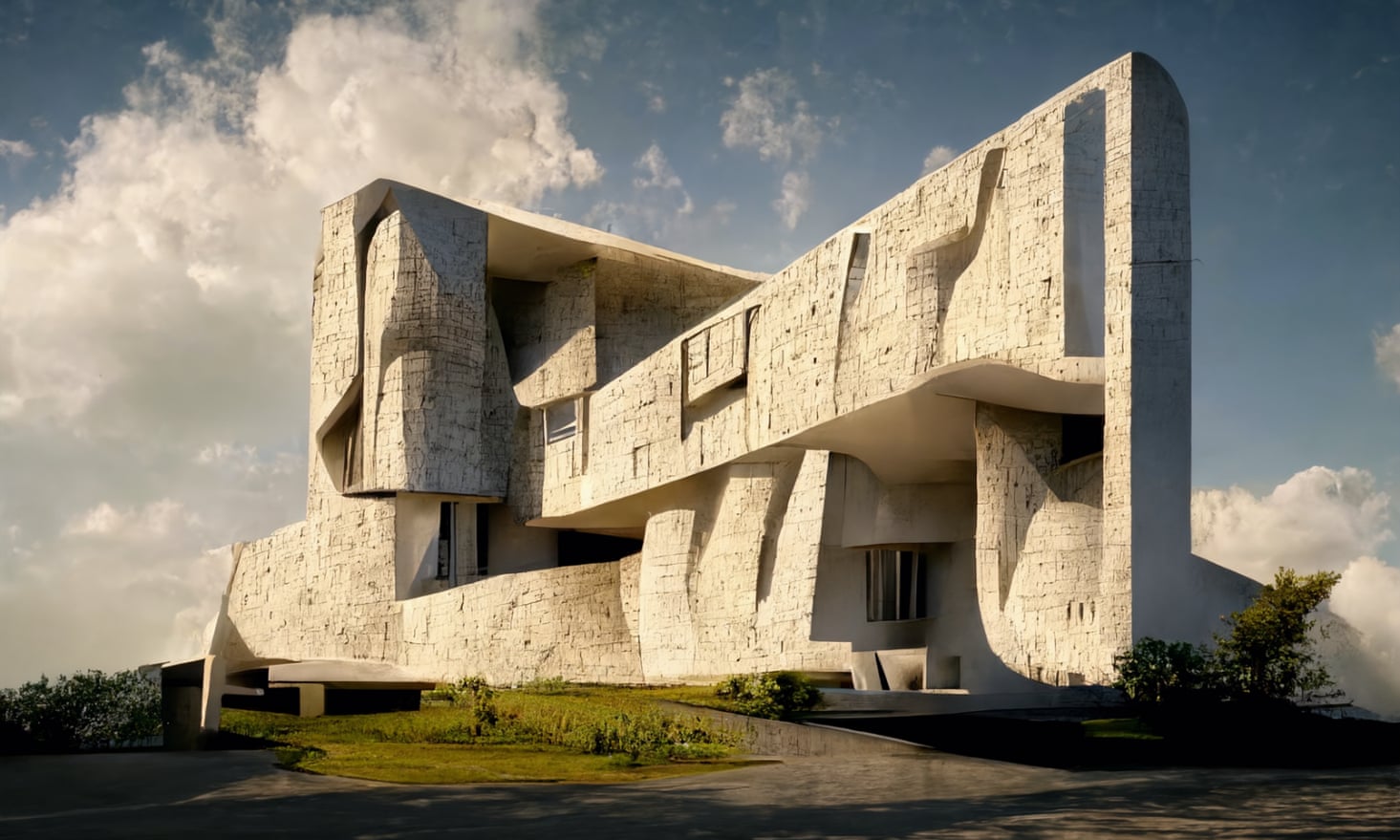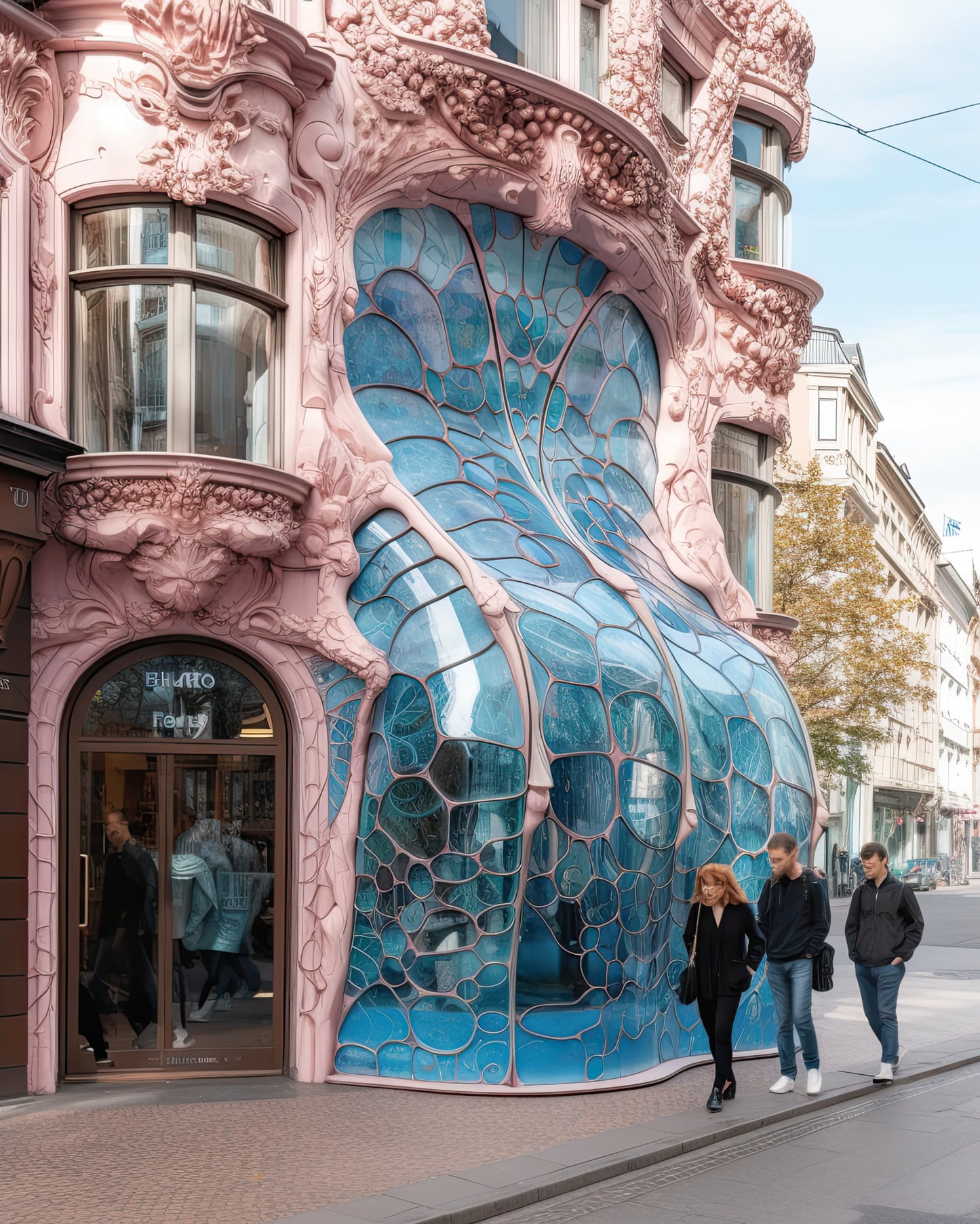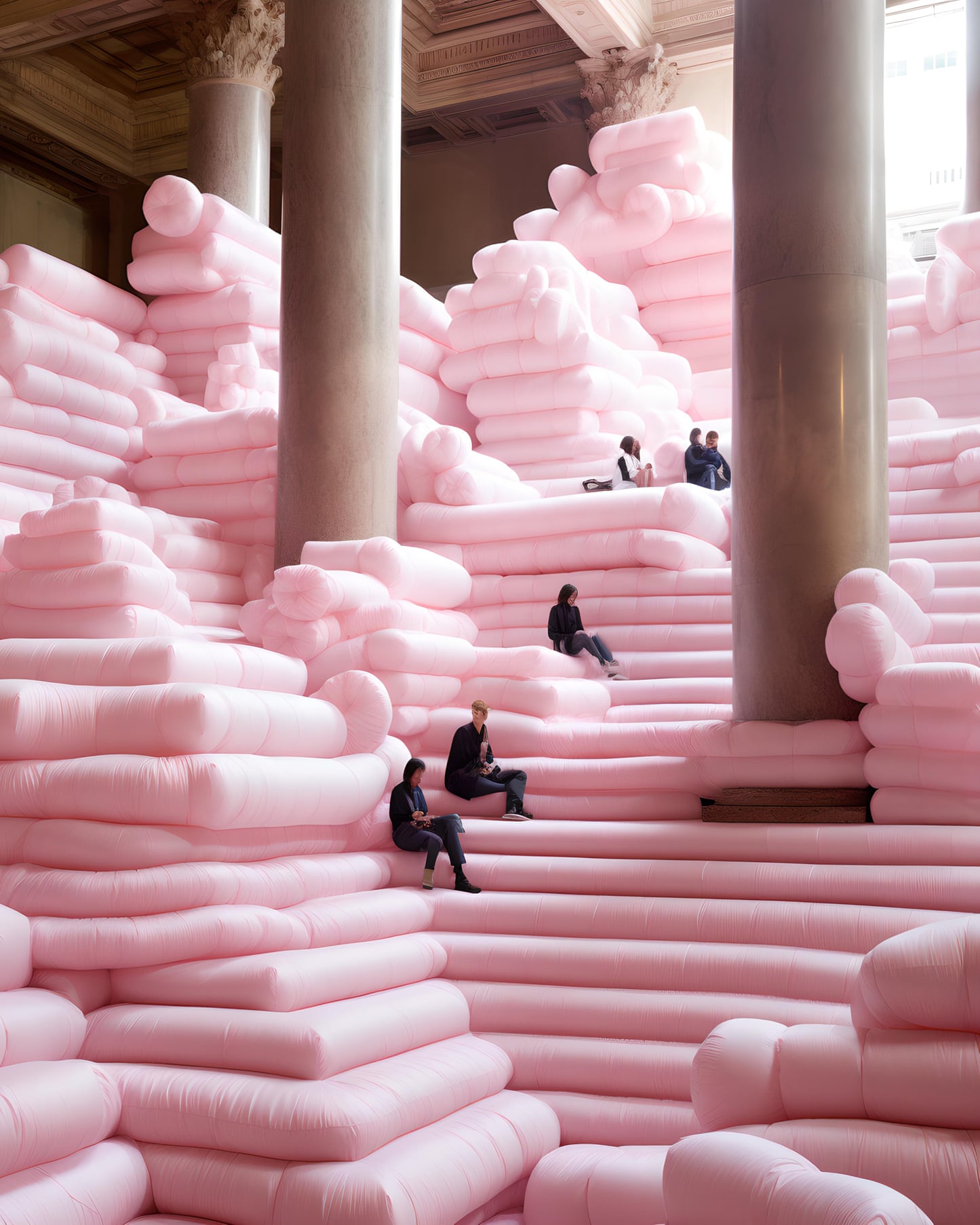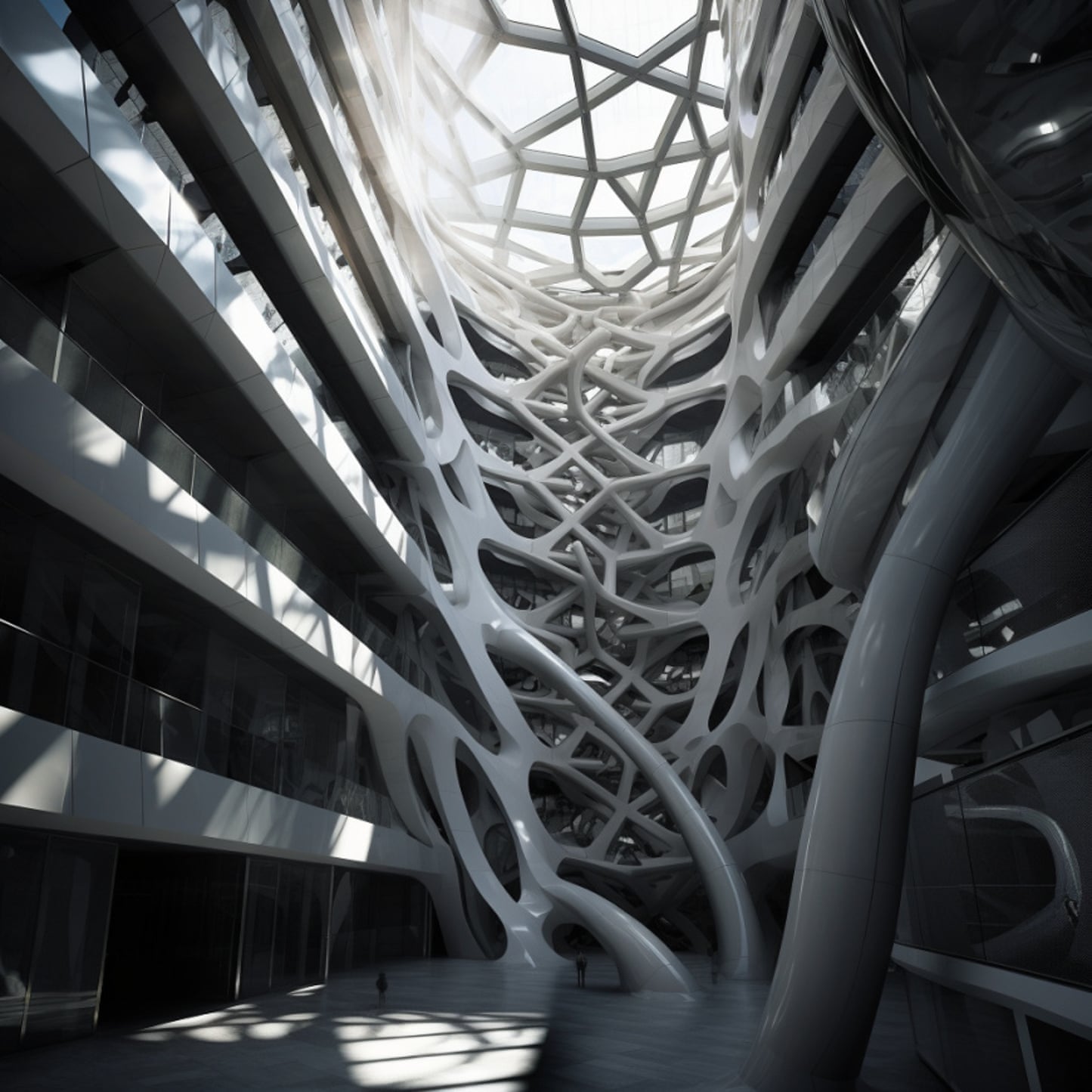
‘It’s already way beyond what humans can do’: will AI wipe out architects?
It’s revolutionising building – but could AI kill off an entire profession? Perhaps not, finds our writer, as he enters a world where Corbusier-style marvels and 500-room hotels are just a click away
‘It’s already way beyond what humans can do’: will AI wipe out architects?
Oliver Wainwright
@ollywainwright
Mon 7 Aug 2023 00.00 EDT

Architecture from beyond the grave … a building created by AI in the style of Le Corbusier. Photograph: Courtesy: Dr Erdem Yildirim
Architecture
It’s revolutionising building – but could AI kill off an entire profession? Perhaps not, finds our writer, as he enters a world where Corbusier-style marvels and 500-room hotels are just a click away
A handful of little green blocks flashes up on the screen, filling a building site with a neat grid of uniform cubes. One second they form rows of towers, next they morph into low-rise courtyards, then they flip back into long slender slabs, before cycling through hundreds of other iterations, in a hypnotic high-speed ballet of bristling buildings.
I watch this while on a Zoom call with Wanyu He, an architect based in Shenzhen, China, and the founder of XKool, an artificial intelligence company determined to revolutionise the architecture industry. She freezes the dancing blocks and zooms in, revealing a layout of hotel rooms that fidget and reorder themselves as the building swells and contracts. Corridors switch sides, furniture dances to and fro. Another click and an invisible world of pipes and wires appears, a matrix of services bending and splicing in mesmerising unison, the location of lighting, plug sockets and switches automatically optimised. One further click and the construction drawings pop up, along with a cost breakdown and components list. The entire plan is ready to be sent to the factory to be built.
I applaud He on what seems to be an impressive theoretical exercise: a 500-room hotel complex designed in minutes with the help of AI. But she looks confused. “Oh,” she says casually, “that’s already been built! It took four and a half months from start to finish.”

‘Fantasy mash-up of sci-fi and art nouveau’ … a creation by Hassan Ragab, using Midjourney. Photograph: Hassan Ragab
The promises – and perils – of AI have been gripping the world of architecture and design in recent months, but few have grasped that the revolution is already under way. Image-making tools such as Dall-E, Midjourney and Stable Diffusion have allowed the effortless creation of seductive visions: skyscrapers in the style of Frank Lloyd Wright, fantasy mash-ups of sci-fi and art nouveau, squidgy marshmallow staircases, buildings made of rubbish. It might be entertaining to visualise Gaudí designing kitchen gadgets or Le Corbusier embracing parametricism, but AI is already being deployed to shape the real world – with far-reaching consequences.
“The problem with architects is that we almost entirely focus on images,” says Neil Leach, author of Architecture in the Age of Artificial Intelligence. “But the most revolutionary change is in the less sexy area: the automation of the entire design package, from developing initial options right through to construction. In terms of strategic thinking and real-time analysis, AI is already way beyond what human architects are capable of. This could be the final nail in the coffin of a struggling profession.”
In Leach’s view, XKool is at the bleeding edge of architectural AI. And it’s growing fast: over 50,000 people are already using it in China, and an English version of its image-to-image AI tool, LookX, has just been launched. Wanyu He founded the company in 2016, with others who used to work for OMA, the architecture practice of Rem Koolhaas (hence the company names). They had become disillusioned with what they saw as an outmoded way of working. “It wasn’t how I imagined the future of architecture,” says He, who worked in OMA’s Rotterdam office before moving to China to oversee construction of the Shenzhen Stock Exchange building. “The design and construction processes were so traditional and lacking in innovation.”
She and her colleagues were inspired to launch their startup after witnessing AlphaGo, the first computer program to defeat a human champion at the Chinese board game Go in 2016. “What if we could introduce this intelligence to our way of working with algorithmic design?” she says. “CAD [computer aided design] dates from the 70s. BIM [building information modelling] is from the 90s. Now that we have the power of cloud computing and big data, it’s time for something new.”
XKool aims to provide an all-in-one platform, using AI to assist with everything from generating masterplan layouts, using given parameters such as daylight requirements, space standards and local planning regulations, right down to generating interiors and construction details. It has also developed a tool to transform a 2D image of a building into a 3D model, and turn a given list of room sizes into floor plans. It’s early days and, so far, the results are clunky: the Shenzhen hotel looks very much like it was designed by robots for an army of robot guests.

By robots, for robots … the real Shenzhen Bay International Hotel, designed and built using XKool. Photograph: XKool
Some architects are calling for caution – not out of fear for their jobs, but because of what the tech could spawn, and the potential for data being misused. “We have to be careful,” says Martha Tsigkari, head of applied research and development at Foster + Partners in London. “It can be dangerous if you don’t know what data was used to train the model, or if you haven’t classified it properly. Data is everything: if you put garbage in, you’ll get garbage out. The implications for data privacy and intellectual property are huge – is our data secured from other users? Is it being used to retrain these models in the background?”
Tsigkari and her team have been probing the possibilities of machine learning for the last five years, on their own secure servers, using data from the extensive library of Foster projects. One of their first experiments used AI to explore how thermally responsive laminate materials could be used in facades, changing their shape to respond to temperature. “Depending on the layering of the laminate, you could have a different deformation under different heat conditions,” says Sherif Tarabishy, Foster + Partners’ design systems analyst. “Imagine a facade that could passively deform, creating louvres or overhangs to shade different parts of a building according to the temperature.”

Stairway to softness … a design by Ricardo Orts using Ulises Studio. Photograph: Ulises (@ulises.studio)
Although the actual science needed to make such things possible is a long way off, AI does enable the kind of calculations and predictive modelling that was impossibly time-consuming before. Tsigkari’s team has also developed a simulation engine that allows realtime analysis of floor plans – showing how well connected one part of a building is to another – giving designers instant feedback on the implications of moving a wall or piece of furniture. Tarabishy shows me a throbbing colour-coded diagram of an office, full of meeting rooms and desks: this weather map of swirling, pulsing colours changes as the AI jiggles the rooms into the optimum arrangement. It’s impressive, but it also suggests a kind of uber-Taylorism, everything calibrated for ultimate efficiency. Could the overuse of AI squeeze out the delight of dawdling, the charms of the leftover and unplanned?
While few firms can boast an in-house R&D lab like Foster’s, architects across the spectrum are adopting AI tools in different ways. One told me they now regularly use ChatGPT to summarise local planning policies and compare the performance of different materials for, say, insulation. “It’s the kind of task you would have given a junior to do,” they say. “It’s not perfect, but it makes fewer mistakes than someone who hasn’t written a specification before.”
Others say their teams regularly use Midjourney to help brainstorm ideas during the concept phase. “We had a client wanting to build mosques in Abu Dhabi,” one architect told me. “I could quickly generate a range of options to show them, to get the conversation going. It’s like an instant mood board.”

